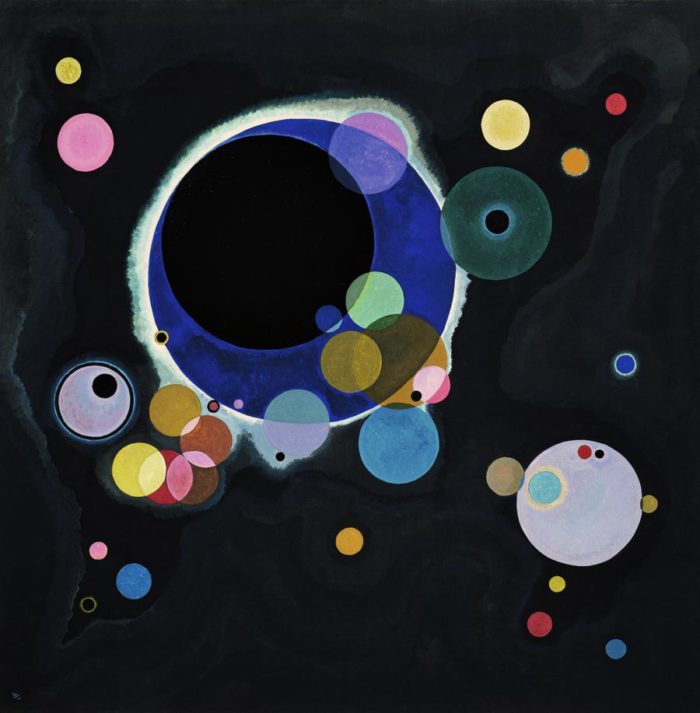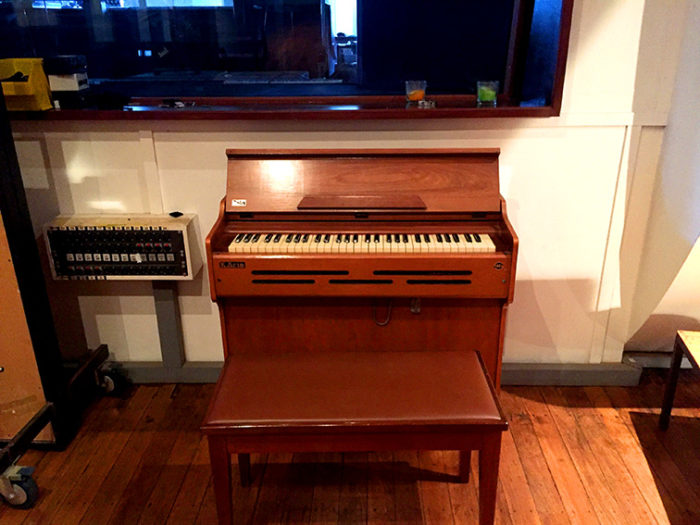Music, Shape and Colour – Practice-based Research
“The term synesthesia (Greek: syn = together, aesthesia = sensation) has been used to describe a wide variety of phenomena. Most commonly, it is used to denote a condition in which stimulation in one sensory modality also gives rise to an experience in a different modality.”
(Robertson, L.C. and Sagiv N., 2005)
Certain theorists and I included veer away from synesthesia as being abnormal or a dysfunctional condition. Rather than engaging in a dualistic notion of normal and abnormal, I feel it is healthier to position and study synesthesia as part of the spectrum of human perception. As theorists such as Shanon (2002) state, synesthesia is a mode of operation that is “very basic to human cognition, but under normal conditions is not very apparent.”
Embracing its possible prevalence, Ramachandran and Hubbard (2001) suggest that synesthesia may be crucial to the understanding of the neural basis of metaphor creation. I can’t help but consider everyday musical statements and terms such as listed below as a gentle evidencing of such a notion;
“the sound is very tinny and bright…”
“a brassy tone…”
“white noise”
Within the study of synesthesia is the breakdown of the two functional elements involved. Ramachandran and Hubbard (2001) name the synesthesia-producing stimuli as the “inducer” and the resulting synthetic experience as the “concurrent”.
In the below described arts-based inquiry, the music is the “inducer” and colour and shape are the “concurrent” phenomena.
Personally, I have always found shape and colour to be helpful in understanding music and in particular music production. For instance, in my work as a mix engineer I find visually plotting out a mix will assist me in making production decisions such as the stereo and depth placement of instruments on the sonic stage.
Visual representations of music are not new. Wassily Kandinsky, is a painter whose depictions of music are amongst my favourite, in particular, his 1926 work Several Circles (1926).

Such work I have found inspiring and also given me points of identification, by this I mean a partial mirror of how I experience music.
Synesthetic experiences are highly subjective. Subjectivity is an unavoidable aspect of the discussion of whether music and sound have colour. Various articles have shown the lack of continuity between different synesthetic reports, for example, some consider middle C to be red, whereas others feel it to be green, yellow or deep blue (Hollander, R. nd). Rather than be deterred by the differences in opinions, I find the lack of symmetry more accommodating of my own perspective and experience.
The module CIM 406, that I am taking as part of my Masters at SAE, has encouraged us in the field of arts-based inquiry. Needing no encouragement, I was eager to see if I could find the tools to approximate a synesthetic experience that questioned the line between sound and colour, and the relationship between the two.
For this research, I required a recorded piece of music as the “inducer” and a visual tool to depict the “concurrent” experience.
The inducer ended up being a recording of a pump organ in one of the studios where I work as a freelance engineer (pictured below).

After hours I recorded 6 raga-inspired improvisations in different keys. One of these recordings was randomly chosen without knowledge of the initial key; such a process was to enable a more scientifically blind experiment that wasn’t influenced by various pre existing ideas of what colour certain notes are.
The tools to depict the concurrent experience ended up being After Effects (AE). I only had a week to learn AE and raced through learning about Solid Layers, masks, keyframes, opacity and basic AE functions in general.
Despite only having one week of AE experience, I found that it was indeed an amazing tool to approximate and communicate a sense of a synesthetic experience.
I hope you enjoy the resultant artwork from this research. To my mind time restrictions has meant that the colours, shapes and positioning are a touch off, further the sync of my colour pulses (keyframes) are also a touch out of sync with my foot peddling on the pump organ. Nevertheless I hope you given you a deeper understanding of sound, colour and synesthesia. My interest has definitely been sparked and I would like to do a lot more practice-based research with these tools.
As discussed by Rust (2007), one of the complexities of art-based research is that the audience has the final say in whether such research has contributed to knowledge and understanding. I am interested in your thoughts and opinions therefore. Did you experience the piece as a whole, or did you experience an audio track and a random visual? Did it give you as sense of immersion into a synesthetic experience? Feel free to respond to such questions and to your own.
I hope if nothing else you enjoy the resultant art work.
______________
REFERENCES:
Grossenbacher, P., & Lovelace, G. (2001). Mechanisms of synesthesia: Cognitive and physiological constraints. Trends in Cognitive Sciences, 5, 36– 41.
Hollander, R. (nd), Light & Sound, Colour & Music. Retrieved from https://roelhollander.eu/en/tuning-frequency/sound-light-colour/
Ramachandran, V.S., & Hubbard, E.M. (2001). Synaesthesia – A window into perception, thought and language. Journal of Consciousness Studies, 8, 3-34.
Robertson, Lynn C., and Sagiv, Noam, eds. (2005), Synesthesia : Perspectives from Cognitive Neuroscience. Cary, US: Oxford University Press
Rust, C. (2007). Unstated contributions – How artistic inquiry can inform interdisciplinary research. International Journal of Design, 1(3), 69-76.
Shanon, B. (2002). The antipodes of the mind: Charting the phenomenology of the ayahuasca experience. Oxford: Oxford University Press
Several Circles (1926) by Kandinsky, W.. Retrieved from https://www.guggenheim.org/artwork/1992


